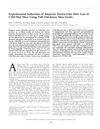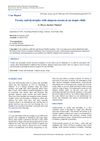TLDR Mouse models help understand alopecia areata and find treatments.
The document discussed the advancements in understanding alopecia areata (AA) through mouse models, particularly the C3H/HeJ strain, which has been instrumental in genetic and preclinical drug testing studies. The identification of additional mouse strains (A/J, MRL/MpJ, SJL/J, and SWR/J) that develop AA allowed for genome-wide association mapping, revealing the complex genetic basis of AA. Studies highlighted the role of retinoic acid metabolism and hair shaft proteins in disease severity and pathogenesis. The research underscored the importance of combining mouse and human studies to unravel the intricate genetics and potential treatments for AA.
54 citations
,
September 2012 in “The journal of investigative dermatology/Journal of investigative dermatology” Vitamin A affects hair loss and immune response in alopecia areata.
717 citations
,
June 2010 in “Nature” Alopecia areata involves both innate and adaptive immunity, with specific genes linked to the disease.
 131 citations
,
November 1998 in “The journal of investigative dermatology/Journal of investigative dermatology”
131 citations
,
November 1998 in “The journal of investigative dermatology/Journal of investigative dermatology” Skin grafts on mice can cause an immune response leading to hair loss, useful for studying human hair loss conditions.
71 citations
,
January 1998 in “Pathobiology” The document concludes that certain rats and mice are useful for studying hair loss in humans and testing treatments.
178 citations
,
June 1994 in “Journal of Investigative Dermatology” Alopecia areata in these mice is inherited, more common in young females, and can be treated with triamcinolone acetonide.
 April 2019 in “International journal of research in dermatology”
April 2019 in “International journal of research in dermatology” A child with rough nails also had hair loss and allergies.

